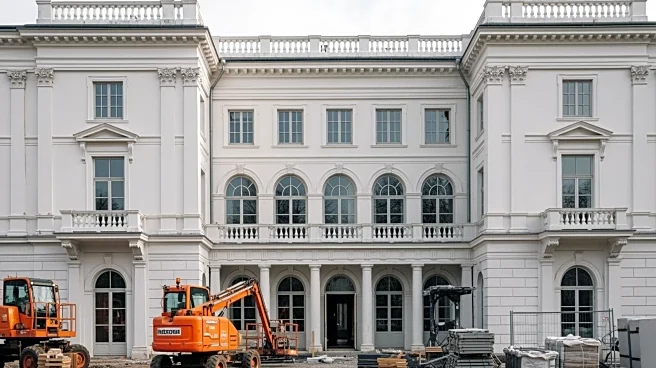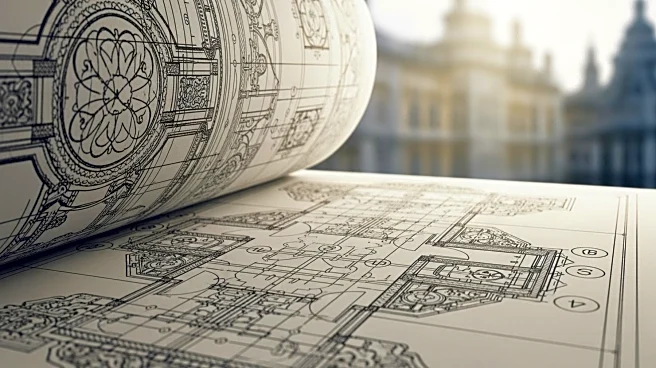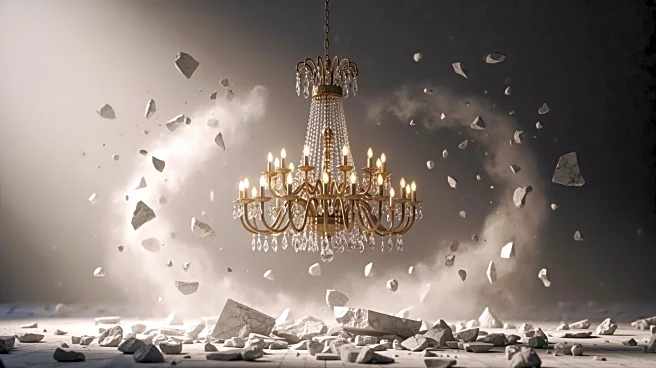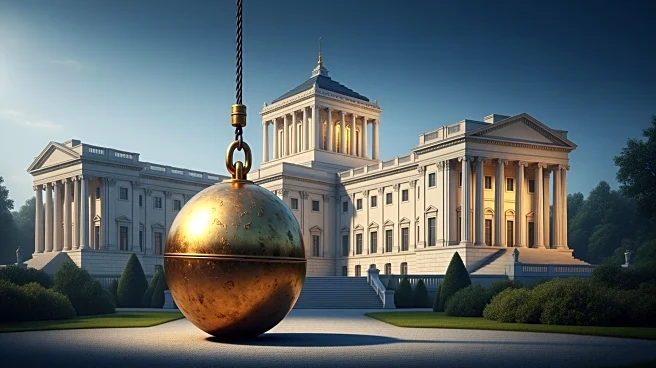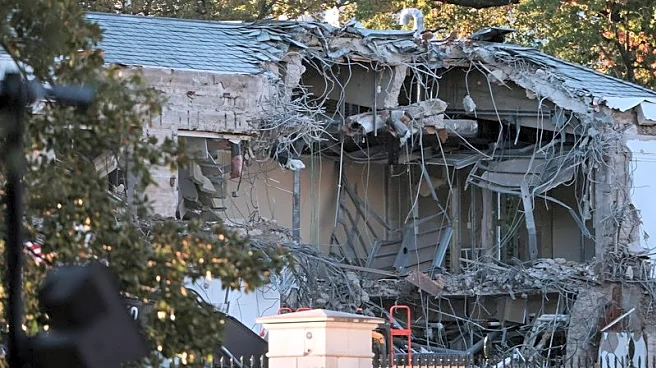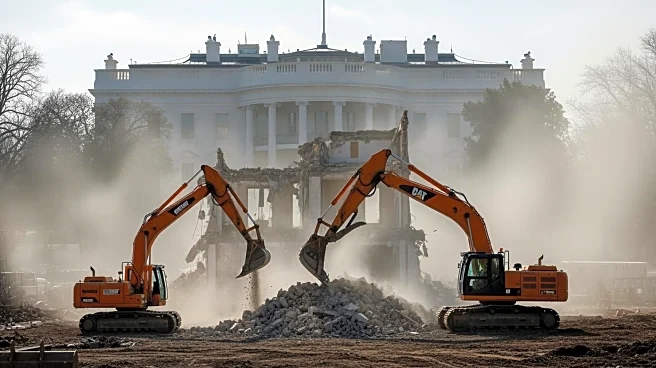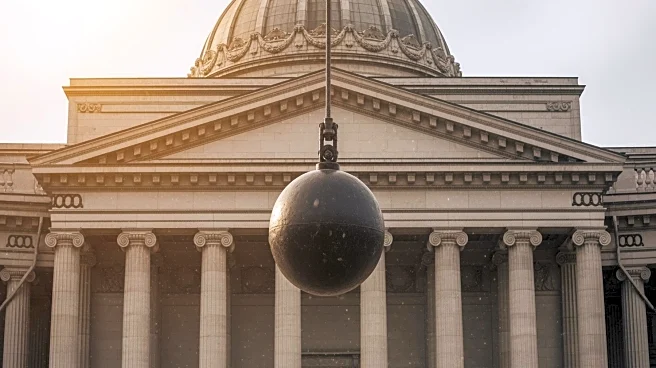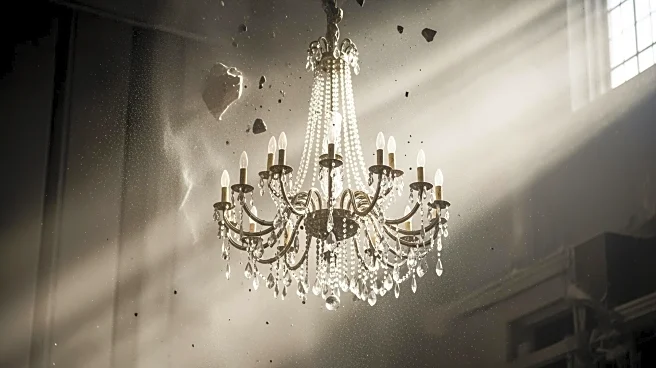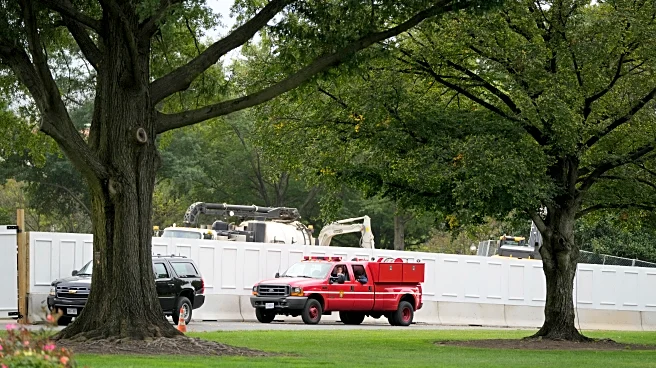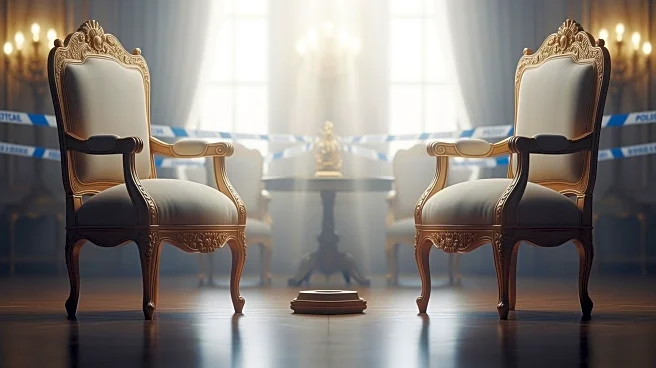What's Happening?
Demolition of the East Wing of the White House has begun to make way for President Trump's new ballroom. The project, estimated at $200 million, involves tearing down portions of the East Wing, traditionally
used for offices by first ladies. The new ballroom, funded by private donors, aims to expand the White House's entertaining capacity and reflect the opulent style of Trump's private clubs. Renderings show a space with gold chandeliers and marble floors, maintaining the neoclassical theme of the executive mansion.
Why It's Important?
The construction of the ballroom marks a significant change to the White House's structure, reflecting President Trump's vision for the executive mansion. The project underscores the president's ability to make substantial alterations to historic government buildings, raising concerns about the preservation of the White House's architectural heritage. The ballroom's addition could enhance the White House's capacity for hosting large events, impacting diplomatic and political functions. However, it also highlights the influence of private funding in government projects and the potential for future administrations to make similar changes.
What's Next?
As construction progresses, the project may face scrutiny from historians and preservationists concerned about maintaining the White House's historical integrity. The involvement of private donors in funding the ballroom could lead to discussions about transparency and accountability in government projects. The completion of the ballroom may alter how events are conducted at the White House, potentially affecting diplomatic engagements and state functions.
Beyond the Headlines
The decision to build a new ballroom at the White House reflects broader themes of presidential authority and the balance between modernization and historical preservation. The project may influence future administrations' approaches to altering government buildings and the role of private funding in public projects. It also highlights the cultural significance of the White House as a symbol of American history and governance.
